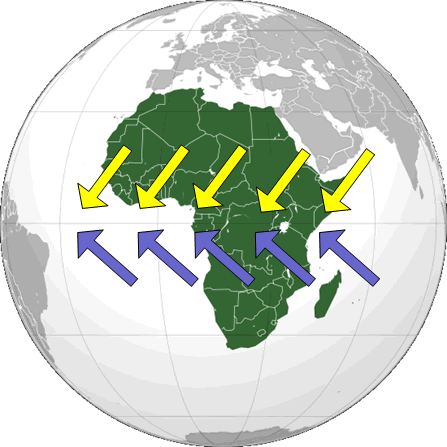English Across the Curriculum
Weather and Climate
Wind systems
Because the earth rotates around its axis air does not move directly from high to low pressure areas. The Coriolis effect makes winds shift . There are three big global wind systems:
- Trade winds blow near the equator between 30° north and 30° south latitude. The trade winds north of the equator blow from the northeast, those south of the equator from the southeast. When they meet at the equator they rise. Rising air leads to the formation of clouds and therefore it starts to rain. A system of clouds and rainy weather is always around the equator but it moves its position depending on the position of the sun.
- Westerlies blow in the middle latitudes between 30° and 60 ° north and south of the equator. These winds are especially strong in higher regions. This area of western winds is also called the jet stream. Airplanes traveling from west to east benefit from strong tailwinds. They need much less fuel and can travel faster.
- Polar winds are easterly winds that blow in the Arctic and Antarctic region. Fronts develop where polar winds and westerlies meet. Storms and cyclones arise around this area where warm and cold air meets.

Trade winds blow from the northeast and southeast towards the equator.
Image (modified) : Martin23230, CC BY-SA 3.0,
via Wikimedia Commons
